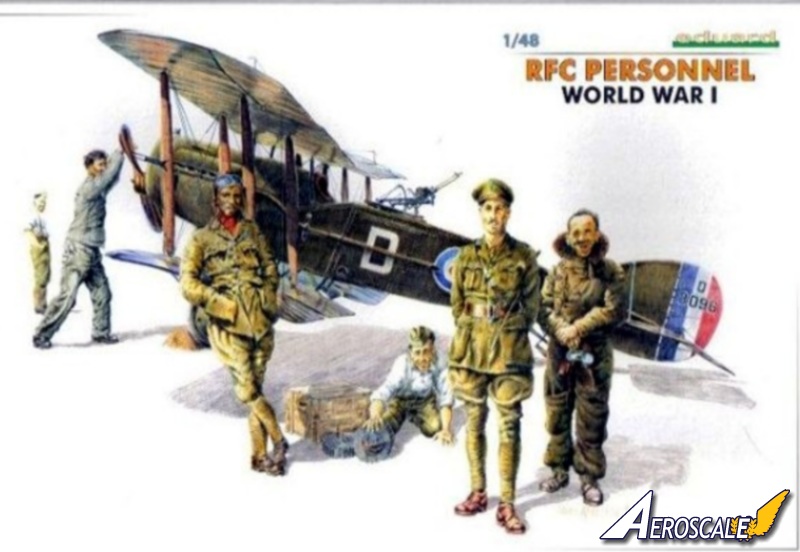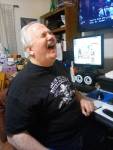Here is a summary from another fellow modeler.
"...The kit consists of 33 tan styrene parts on two sprues, plus a nice set of scale color paper maps. Other than the human figures, there is a crate, maybe 60 x 18 x 10 in. in scale, with separate lid.
There are six men in this set. All their arms and all their heads are separate pieces, and thus positionable. Three of the figures are whole bodies, and three come with separate legs and torsos, again positionable. There were a couple of small sinkholes in the smalls of their backs, easily filled. Surface detail and casting crispness were very nice, typical of other recent Eduard kits.
There are two men in Class A uniforms, one wearing a flight helmet and one in a combination cover and Sam Browne belt. One figure is in a heavy flight suit. There are three mechanics, working hatless and coatless. One is stooping to lift off the crate lid, and it's not clear what the other two were designed to do, but again, you can set their arms to different purposes.
I glued together two of the figures and found their shoulders a bit boxy, but nothing that can't be fixed with a few swipes of a sharp blade. Reducible shoulders will be a plus when you get into custom- positioning of limbs anyway.
If you are interested in repositioning body parts, be aware that the core technique involves wedging in some shims of styrene, either of sheet stock or sprue. Armor diorama modelers and miniaturists have been doing this for years, and a quick glance at some of their articles will show you how a wedge fills a bent waist, knee or shoulder.
This level of figure modeling exercises your creativity and at the same time poses low risk: you can easily recover from any assembly that didn't suit you. Just cut it apart and glue it together again at a slightly different angle.
I thought the mechanic I assembled had a small head in proportion to his body, but it may be that a shim to raise his chin a few thousandths above his collar will fix that. Also, I may add hats, too, an easy thing to accomplish with a bit of sheet styrene.
You get a fairly complete and helpful set of instructions with this kit, and the important guidance is the colors. Sometimes in novels written in by Brits, you’ll hear soldiers called “our brothers in brown” …when sailors, policemen or intelligence types are doing the talking. Interestingly, the color schemes for these RFC fellows bear out this image.
There is a paint grid that will cross-reference you into Model Master and Humbrol from most of the Gunze/Mr. Color numbers called out on the drawings. You can then embark on your own inquiry as to the appropriate shade of brown for WWI British uniform wool. The officers’ pants, tunics and the fabric part of their hats should all be that color, whatever it is. Uniform shirts and neckties should be a different olive from the outer uniform parts, but the shirt and tie seem to be the same color.
I plan to use the color guidance as a point of departure, not an absolute authority. For example, the instructions want you to use black on all the uniform footwear, commissioned and enlisted. But the Czechs say the Sam Browne belt should be brown leather. Honestly, these are British officers. Most guys I know who went to ordinary land grant colleges in the U.S. know better than to wear a brown belt with black shoes.
The instructions suggest some variety in the color of the mechanics’ shirts. These men have shed their uniform blouses after morning muster, and their shirts can be a variety of light grays or muted tans or greens.
This is one of four ground crew sets made by Eduard. The others are WWII USAAF, Luftwaffe, and WWI German. I haven't seen inside any of the others yet. They're available thru your LHS or at Squadron or Great Models online. Price is about $10..."
IMHO, leather brown is the best colour to use in all cases here folks.



























